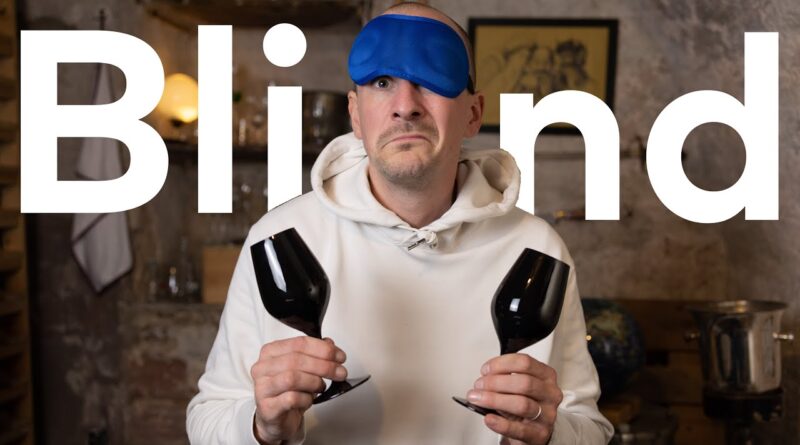ULTIMATE BLIND TASTING – Using ONE SENSE per WINE
Go to https://atlascoffeeclub.com/masterofwine to get 50% off your first bag of coffee + FREE shipping!
Support me on my PATREON: https://patreon.com/konstantinbaum
Follow me on …:
https://www.instagram.com/konstantinbaum_mw/
Check out my website:
https://baumselection.com/
I use this wine key: Laguiole en Aubrac Wine Key Ebony
I have used this glass in this Video: RIEDEL Veritas Champagne, Spiegelau Authentis Blind Tasting
I have tasted the following wines in this Video:
2021 Aldinger Trollinger Sine Fellbacher Ortswein Germany – 13 US $
2018 Alegre Valganon Embotellado 3er Ano Rioja Blanco Spain – 35 US $
2019 Fontodi Chianti Classico Italy – 28 US $
The 100 Point Scoring System (from www.robertparker.com):
96-100: An extraordinary wine of profound and complex character displaying all the attributes expected of a classic wine of its variety. Wines of this caliber are worth a special effort to find, purchase and consume.
90 – 95: An outstanding wine of exceptional complexity and character. In short, these are terrific wines.
80 – 89: A barely above average to very good wine displaying various degrees of finesse and flavor as well as character with no noticeable flaws.
70 – 79: An average wine with little distinction except that it is soundly made. In essence, a straightforward, innocuous wine.
60 – 69: A below-average wine containing noticeable deficiencies, such as excessive acidity and/or tannin, an absence of flavor or possibly dirty aromas or flavors.
50 – 59: A wine deemed to be unacceptable.
Today I am going to blind taste three wines – that’s not new, you might say but there is a catch. Instead of relying on all of my senses I will only use my eyes for the first wine, my nose for the second wine and my palate for the third wine. We usually have five basic human senses: touch, sight, hearing, smell and taste. For wine tastings we usually rely on three to four of them as hearing does not really play a role. However, there were studies that showed that the background music played at a tasting influenced the results – so you could say that all five senses play a role. Blind tastings are difficult and usually I combine the information from all senses to form my opinion on the wine.
In this experiment I am going to only focus on one sense per wine, using these black wine glasses for two of the wines. Leon picked those wines and I have no idea what they are. All three wines are at the same temperature so I would not be able to tell a white wine from a red wine based on temperature in my mouth. To be honest; I don’t think this is going to be easy but I hope that me torturing myself might be at least entertaining for you …
Usually, people use the sense of sight the most when identifying objects like the road ahead or whether this juicy fruit is an apple or an orange. In blind tastings it play a much smaller role but it is relevant. Everyone with good eyes can tell a red from a white wine and in most cases you can identify a sparkling wine just by looking at it. You can also see what the alcohol level of a wine is and whether it has been filtered and you might be able to see whether a wine is old or young.
Different grape varieties tend to produce darker or lighter colored wines. Pinot Noir Nebbiolo lighter colored. Humans are able to recognize and, particularly, memorize up to 10,000 different aromas. Still, it is pretty normal that a normal person is not able to identify common flavors by name. I also often think that I know a flavor, but I am not able to say what it is. It is important to agitate the glass to release as many volatile substances in the glass as possible.
The flavor can give you a lot of information on ripeness level of the fruit, Cellar treatments and the grape variety. If a wine smells of green vegetables and Chocolate it might be made from less ripe fruit and was aged in oak – but these descriptors might point to Cabernet Sauvignon or Sauvignon Blanc. Without having seen the wine and having tasted it you might actually confuse these two very varieties, that produce very different wines.
The tasting capacity of the mouth is limited. We can feel / touch CO2, the concentration, alcohol and the temperature of the wines as well as astringency. The tongue has taste receptors which can sense sweetness, acidity, bitterness, saltiness, and the more recently recognized umami. You to swoosh your wine around in your mouth in order to get the whole mouth in contact with the wine. In blind tasting I often heavily rely on the sensation on my palate.

